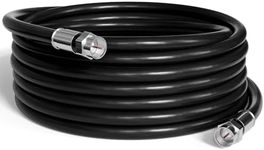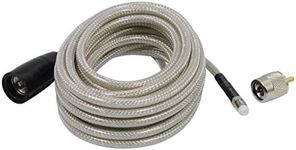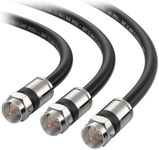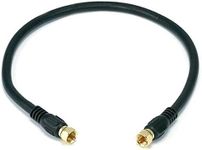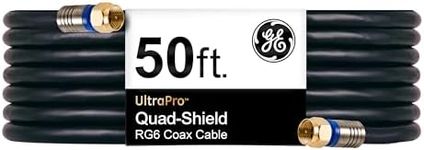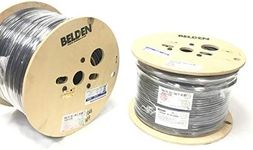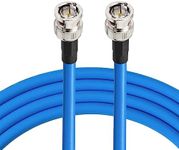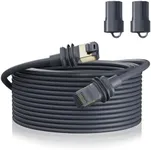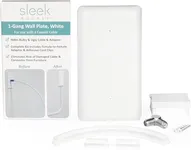Buying Guide for the Best Coaxial Cables
When it comes to picking the right coaxial cable, it's important to understand that these cables are used for transmitting video, audio, and data signals. They are commonly used in television connections, internet connections, and other communication systems. Choosing the right coaxial cable involves understanding the key specifications and how they relate to your specific needs. Here are the key specs you should consider when selecting a coaxial cable.ImpedanceImpedance is a measure of the resistance a cable offers to the flow of electrical current. It is important because it affects the quality of the signal transmission. The most common impedance values for coaxial cables are 50 ohms and 75 ohms. 50-ohm cables are typically used for data and RF (radio frequency) applications, while 75-ohm cables are used for video and television signals. To pick the right one, match the impedance of the cable to the impedance of your devices and the application you are using it for.
Cable TypeThere are different types of coaxial cables, such as RG6, RG59, and RG11, each with its own characteristics. RG6 cables are the most common and are suitable for most home applications, including TV and internet. RG59 cables are thinner and are often used for shorter runs and lower frequency signals. RG11 cables are thicker and are used for longer runs and higher frequency signals. Choose the cable type based on the distance of the run and the frequency of the signal you need to transmit.
ShieldingShielding refers to the layers of metal foil and braid that surround the inner conductor of the cable. It is important because it protects the signal from external interference and noise. Coaxial cables can have single, double, or even quad shielding. Single shielding is adequate for most indoor applications, while double or quad shielding provides better protection and is recommended for areas with high interference or for outdoor use. Consider the environment where the cable will be used and choose the appropriate level of shielding.
Connector TypeThe connectors at the ends of the coaxial cable are crucial for ensuring a secure and reliable connection. The most common types are F-type, BNC, and RCA connectors. F-type connectors are typically used for TV and internet connections, BNC connectors are used for professional video and RF applications, and RCA connectors are used for audio and video connections. Select the connector type that matches the ports on your devices and the application you are using the cable for.
Cable LengthThe length of the coaxial cable is important because it affects signal strength. Longer cables can result in signal loss, so it's important to choose a length that is just right for your needs. For most home applications, a cable length of up to 100 feet is usually sufficient. If you need to run the cable over longer distances, consider using a signal amplifier to maintain signal quality. Measure the distance between your devices and choose a cable length that provides a little extra length for flexibility.
Frequency RangeThe frequency range of a coaxial cable determines the range of signals it can effectively transmit. This is important for ensuring that the cable can handle the specific signals you need to transmit. For example, RG6 cables typically support frequencies up to 3 GHz, making them suitable for most TV and internet applications. Higher frequency ranges are needed for more demanding applications like satellite TV. Check the frequency requirements of your devices and choose a cable that supports those frequencies.
